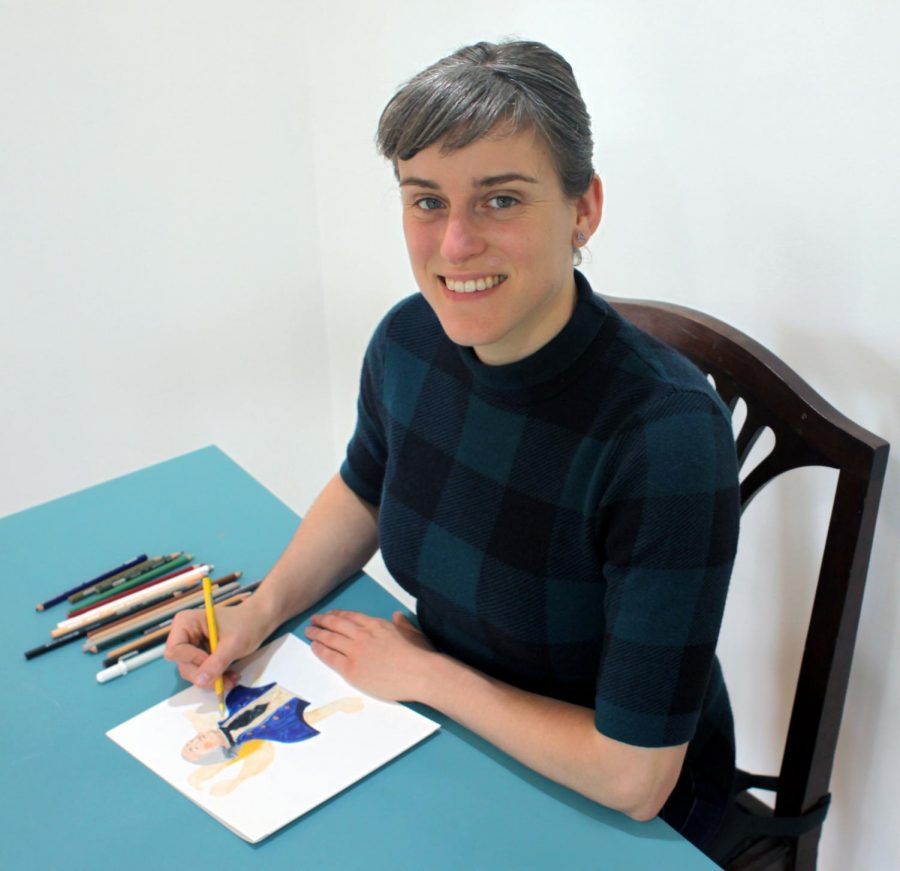Heckel showcases her vision through art
Contributed by Heather Hecklel
Heather Heckle opened-up her view of the world to the rest of society by visualizing the way she sees the world through art. Although, Heckel used to be self-conscious about her eyesight, she has chosen to embrace it with confidence.
Art is a powerful measure of storytelling and is often known to speak louder than words. For adjunct art professor Heather Heckel, this holds true, as she allows viewers to see the world through her eyes in her artwork.
Heckel’s artwork appears on the walls in the Choate House on campus. There was a reception held on February 4 to celebrate all of her accomplishments.
Her artwork is a result of her M.F.A. thesis from the Savannah College of Art and Design. In order to officially obtain her Masters in Fine Art, she had to create a thesis statement. The online program took Heckel two years, and a year of that was spent working on her thesis assignment. For her thesis statement, she was given the task to develop a thesis statement and write a research paper as well as create a body of artwork to be displayed in a show.
Heckel titled her artwork “In Unplain Sight,” as each piece is a representation of her double vision.
“These images explore shifting my focus from being fearful of how the world is looking at me to being confident in sharing and embracing how I look at the world,” Heckel said. “Each artwork features my double vision that is both blurry and sharp, a result of my strabismic eye condition.”
The drawing instructor drew upon subjects that she comes across commonly in her daily life. This adds to the personal reveal of what these subjects look like to her on a daily basis. Heckel’s strabismic eye condition causes her to view objects differently.
“I see a hyper clear image with my dominant eye, and with my other eye I see an overlapping ghost image. This double vision denies me depth perception, and I see everything two-dimensionally, in a constantly shifting kaleidoscope,” she explained.
For this art show, she decided to focus mainly on smaller porcelain objects. In addition, she utilized the artist techniques of light and shadow to represent that two objects cannot exist in the same space at the same time due to her double vision. The light and shadow helped to create the illusion of form and depth within her pieces.
Through her research paper, Heckel discovered that double vision was common among historical artists, such as Leonardo Da Vinci and Pablo Picasso. This finding helped her gain confidence in her work and through her eye condition.
She first discovered her interest in art as a young child, as her mother was an art instructor and she was surrounded by various artistic supplies. Furthermore, she added that she was fortunate to attend school systems that had strong art programs.
Although Heckel always had a passion for art, she tried multiple different majors in college, such as environmental science and biomedical photography, before deciding to receive her Bachelor of Fine Arts in illustration from Ringling College of Art and Design. Heckel also received a Master’s Degree in art education from the School of Visual Arts and works as an Art teacher during the day.
Through another student in her online program at Savannah College of Art and Design, she was able to find a connection through Pace. She began teaching at Pace during the Fall 2019 semester, and is presently teaching a drawing course at the university. Heckel is grateful for the spot in Choate House, where her work will remain on display until February 24th.
Your donation supports independent, student-run journalism at Pace University. Support the Pace Chronicle to help cover publishing costs.

